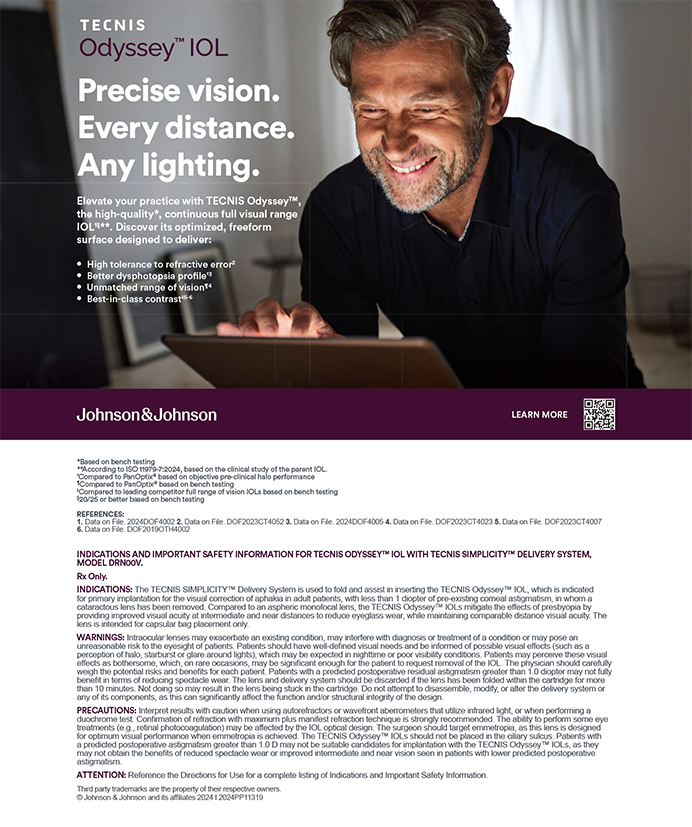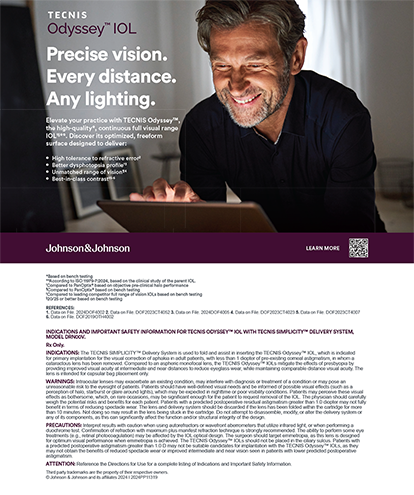Phase 2 Clinical Trial of NVC-422 for Adenoviral Conjunctivitis
NovaBay Pharmaceuticals, Inc., announced the results of a phase 2 clinical study of its NVC-422 ophthalmic solution for the treatment of adenoviral conjunctivitis.1 Of a total of 452 patients randomized 1:1 for treatment with the novel agent or its vehicle as placebo, 81 were confirmed by laboratory findings to have adenoviral conjunctivitis. The predetermined primary endpoint of sustained microbiological success of 20% greater than placebo on day 5 or 7 was not met.
An additional efficacy analysis of the 38% of patients infected with adenovirus serotypes commonly associated with epidemic keratoconjunctivitis (EKC) was suggestive of positive treatment effects in clinical signs, symptoms, and microbiological findings, according to a news release from the company.
EKC is known to cause considerable morbidity. Once the cornea becomes involved, subepithelial infiltrates, photophobia, and blurred vision may persist for months to years (data on file with Adenovir Pharma AB, 2011). EKC may produce pseudomembranes and membranes, leading to significant conjunctival scarring with a loss of goblet cells and symblepharon formation. This can result in chronic dry eyes and the need for long-term tear supplementation, the news release stated.
PHASE 2 STUDY DESIGN AND FINDINGS
In this comprehensive, multicenter, double-masked, parallel, randomized US study, patients were enrolled based on a diagnosis of adenoviral infection using a rapid antibody-based kit or a positive diagnosis by a physician’s checklist. Patients were dosed one drop per eye eight times a day for 10 days.
Microbiological, clinical, and safety evaluations were performed on days 3, 5, 7, 9, and 11, and a follow-up was done 1 week later on day 18. Originally intended to evaluate a total of 220 patients with confirmed adenoviral infection (110 in each group for NVC-422 and placebo-treated patients), the study was concluded early based on an interim analysis of the first 50 adenovirus-positive patients on day 5 or 7 and a lower-than-expected rate of enrollment of adenoviral-positive patients.
PRIMARY STUDY ENDPOINT
The original primary study endpoint was defined as the proportion of patients with microbiological success for eradication of adenoviruses on any day. In February 2010, the protocol was amended, and only day 5 or 7 was selected for analysis of the primary endpoint. Success was defined as the sustained eradication of adenovirus that remained absent at all subsequent visits. Of the 81 evaluable patients, 10 in the active group and eight in the placebo group met this endpoint on day 5. On day 7, the patients meeting the endpoint increased to 20 in the active group and 19 in the placebo group. The difference was not statistically significant at either day.
In the adenovirus-positive population, 50 of the 81 patients reported blurred vision at entry. In the subset of patients infected by adenovirus serotypes commonly associated with EKC (8, 19, and 37), 21 of 30 reported blurred vision at entry.
On day 11, in the adenovirus-positive population, the clearing rate for sustained blurred vision was 70% (19/27) for the active group compared to 61% (14/23) for the placebo group, a difference of 9%. On day 18, in the adenoviruspositive population, the clearing rate of sustained blurred vision was 89% (24/27) for the active group compared to 74% (17/23) for the placebo group, a difference of 15%.
RESULTS FOR EKC PATIENTS
On day 11 for the EKC population, the clearing rate of sustained blurred vision was 85% (11/13) for the active group compared to 38% (3/8) for the placebo group, a difference of 47%. On day 18 for the EKC population, the clearing rate of sustained blurred vision was 92% (12/13) for the active group compared to 50% (4/8) for the placebo group, a difference of 42%.
In the 81 adenovirus-positive patients, the sustained microbiological success rate increased throughout the 18 days of the study to 83% (35/42) for the active group and 74% (29/39) for the placebo group at day 18, a difference of 9%. The maximal difference at any treatment day was 12% in favor of the active group. In the EKC population (30 patients), the sustained microbiological success rate increased throughout the 18 days of the study to 77% (13/17) for the active group and 62% (8/13) for the placebo group at day 18, a difference of 15%. Throughout the study, the difference in success rates between active and placebo for the EKC population was always positive and ranged from approximately 6% to 18%, starting at day 3.
CONCLUSION
Eric Donnenfeld, MD, chief medical editor of Cataract & Refractive Surgery Today, commented on the study: “I have thoroughly reviewed the data analyses from this adenovirus conjunctivitis study and found them to be compelling, particularly as they relate to epidemic keratoconjunctivitis. As a practicing ophthalmologist who has participated in over 40 FDA studies, some involving anti-infectives to treat viral eye infections, I appreciate the need in the market for a product that can treat these serious eye conditions. I believe NVC-422 has the potential to make a difference in the lives of these patients.”
Eric D. Donnenfeld, MD, is a professor of ophthalmology at NYU and a trustee of Dartmouth Medical School in Hanover, New Hampshire. Dr. Donnenfeld is in private practice with Ophthalmic Consultants of Long Island in Rockville Centre, New York. He acknowledged no financial interest in the product or company mentioned herein. Dr. Donnenfeld may be reached at (516) 766-2519; eddoph@aol.com.
- NovaBay Pharmaceuticals reports results from phase 2 clinical trial of NVC-422 for adenoviral conjunctivitis.May 18,2011.http://www.novabaypharma.com/investors/release/ may_18_2011.Accessed June 1,2011.
Confirmed Activity of Aganocides Against Ophthalmic Pathogens: ARVO
Kathryn Najafi, MD, and colleagues presented a poster on the broad-spectrum, fast-acting antimicrobial agents NVC-727, NVC-638, and NVC-704 (all from NovaBay Pharmaceuticals, Inc.) at the 2011 ARVO meeting.1
The researchers found that NVC-727 was effective against adenovirus and herpes simplex virus 1, with a good activity against Staphylococcus aureus and Escherichia coli. NVC-727 showed a fast time to kill in 10% synthetic tears and human donor tears at pH 7 against S aureus and herpes simplex virus 1. NVC-638 and NVC-704 are novel structural series with good antibacterial and antiviral (human adenovirus C serotype 5 and herpes simplex virus 1) activity at pH 4, Dr. Najafi and colleagues reported.
“NVC-727, NVC-638, and NVC-704 are very exciting new molecules in our growing portfolio of broad-spectrum, fast-acting, Aganocide compounds,” Mark Anderson, PhD, chief scientific officer of NovaBay Pharmaceuticals, Inc., stated in a news release.2 “In ophthalmology, we are uniquely positioned to develop an eye drop that will treat both bacterial and viral causes of conjunctivitis including epidemic keratoconjunctivitis also known as EKC.”
According to the company, adenovirus is very robust and can survive outside the body on hard surfaces. Patients with epidemic keratoconjunctivitis are often advised not to attend work or school for 1 to 2 weeks. Approximately 45% of individuals in a patient’s close surroundings will become infected, and approximately 3 million school days are lost annually as a result of acute conjunctivitis. Although exact numbers are difficult to determine, estimates suggest the number of cases of ocular adenoviral infections may be as high as 15 to 20 million per year in the United States (data on file with Adenovir Pharma AB, 2011).
Kathryn Najafi, MD, is in practice at the Eye Institute of Marin in San Rafael, California. She is a founding member of the board of directors of NovBay. Dr. Najafi may be reached at (415) 444-0300.
- Najafi K.Aganocide compounds effective against ophthalmic pathogens.Poster presented at:2011 ARVO Meeting;May 6, 2011;Fort Lauderdale,FL.
- NovaBay Pharmaceuticals spotlights three new Aganocide compounds with confirmed activity against ophthalmic pathogens.May 6,2011.http://www.novabaypharma.com/investors/release/may_6_2011.Accessed June 1,2011.


